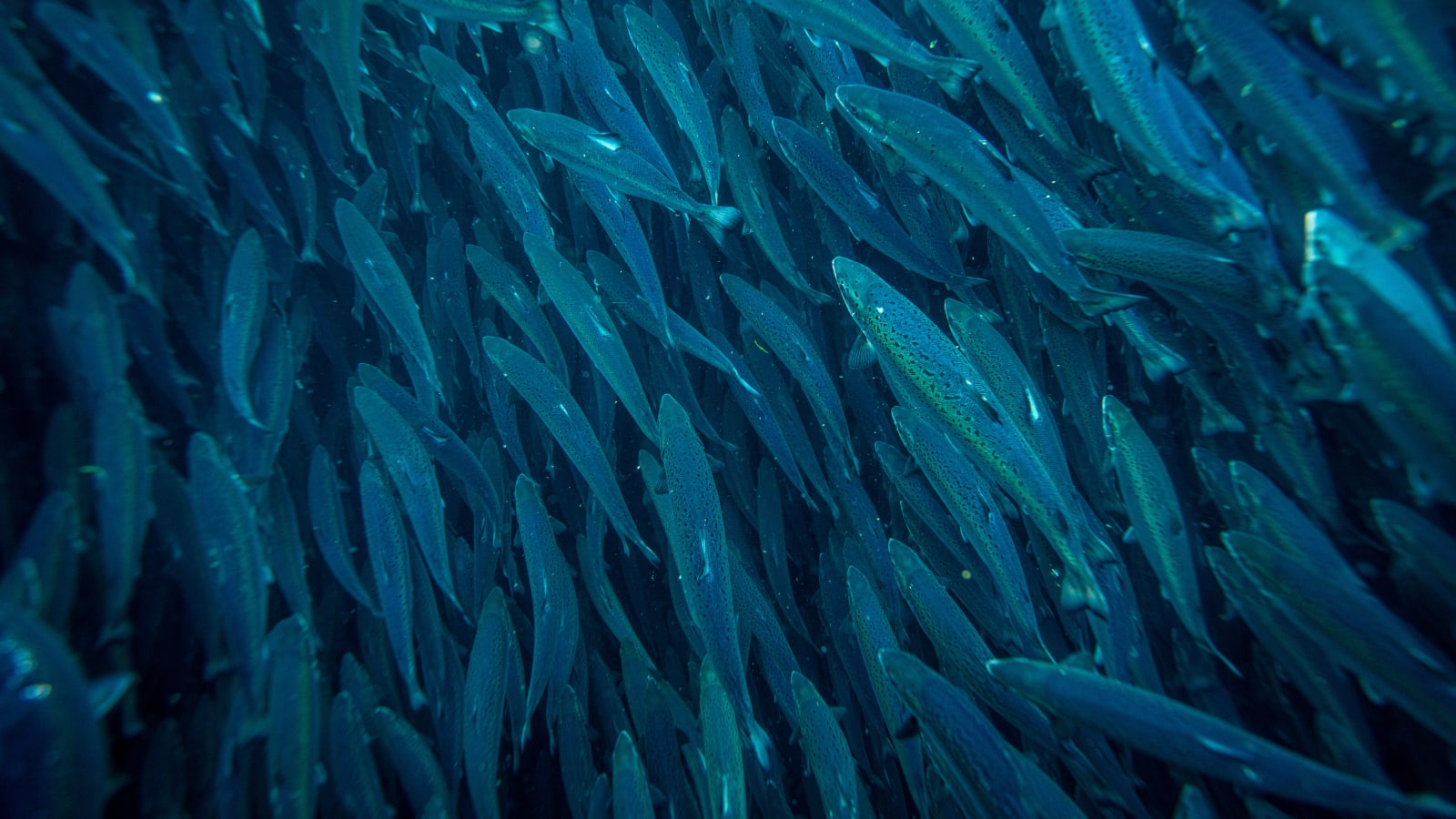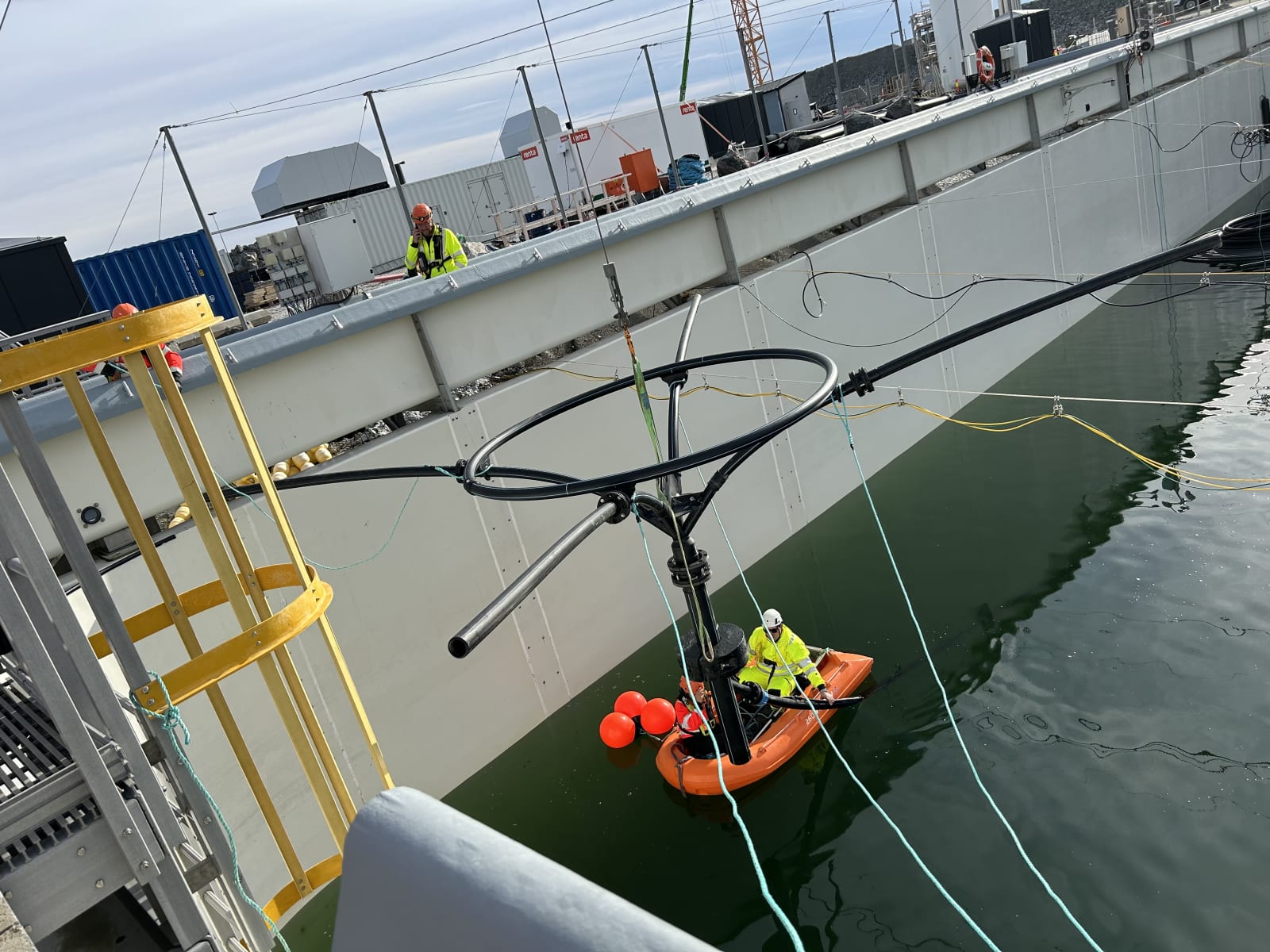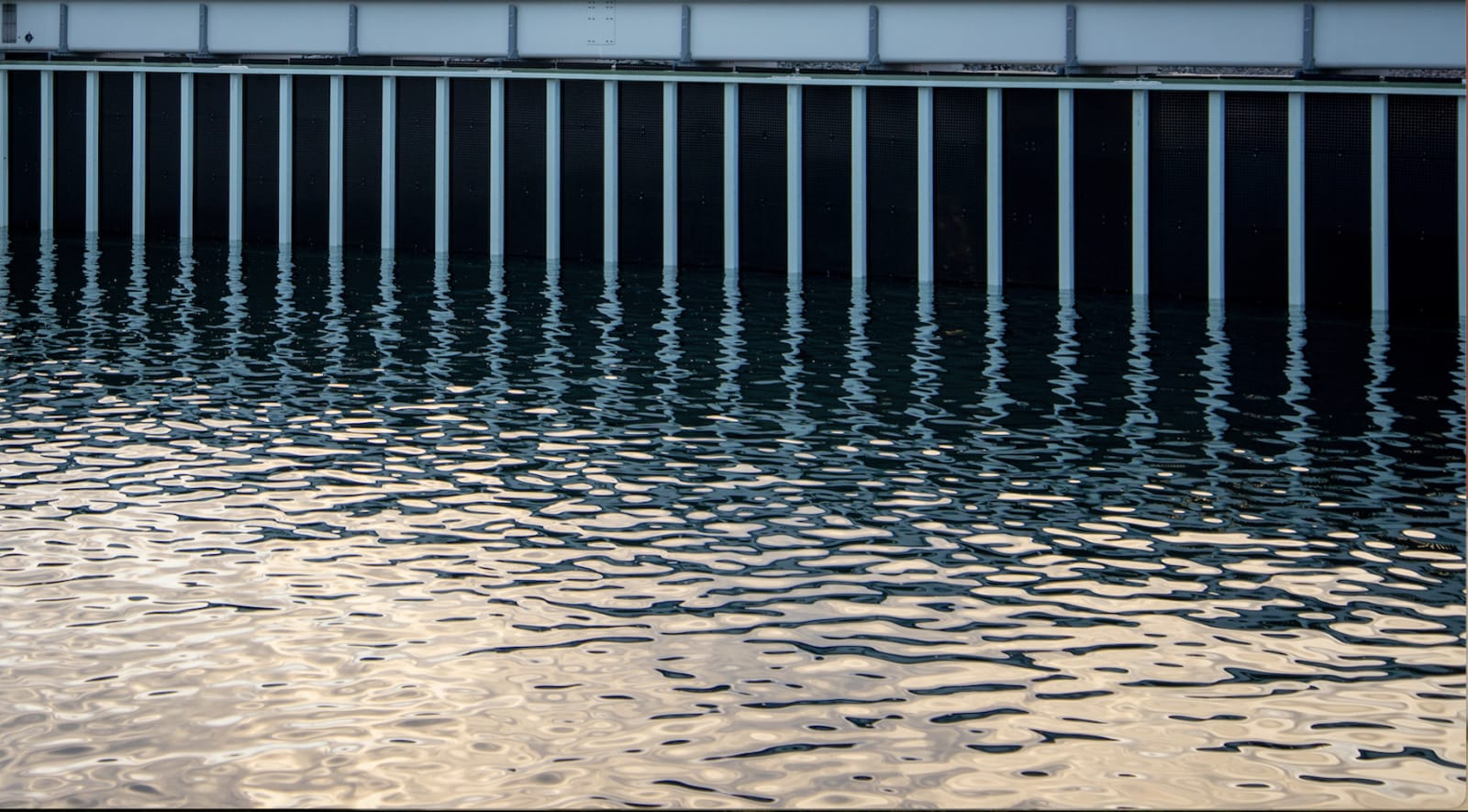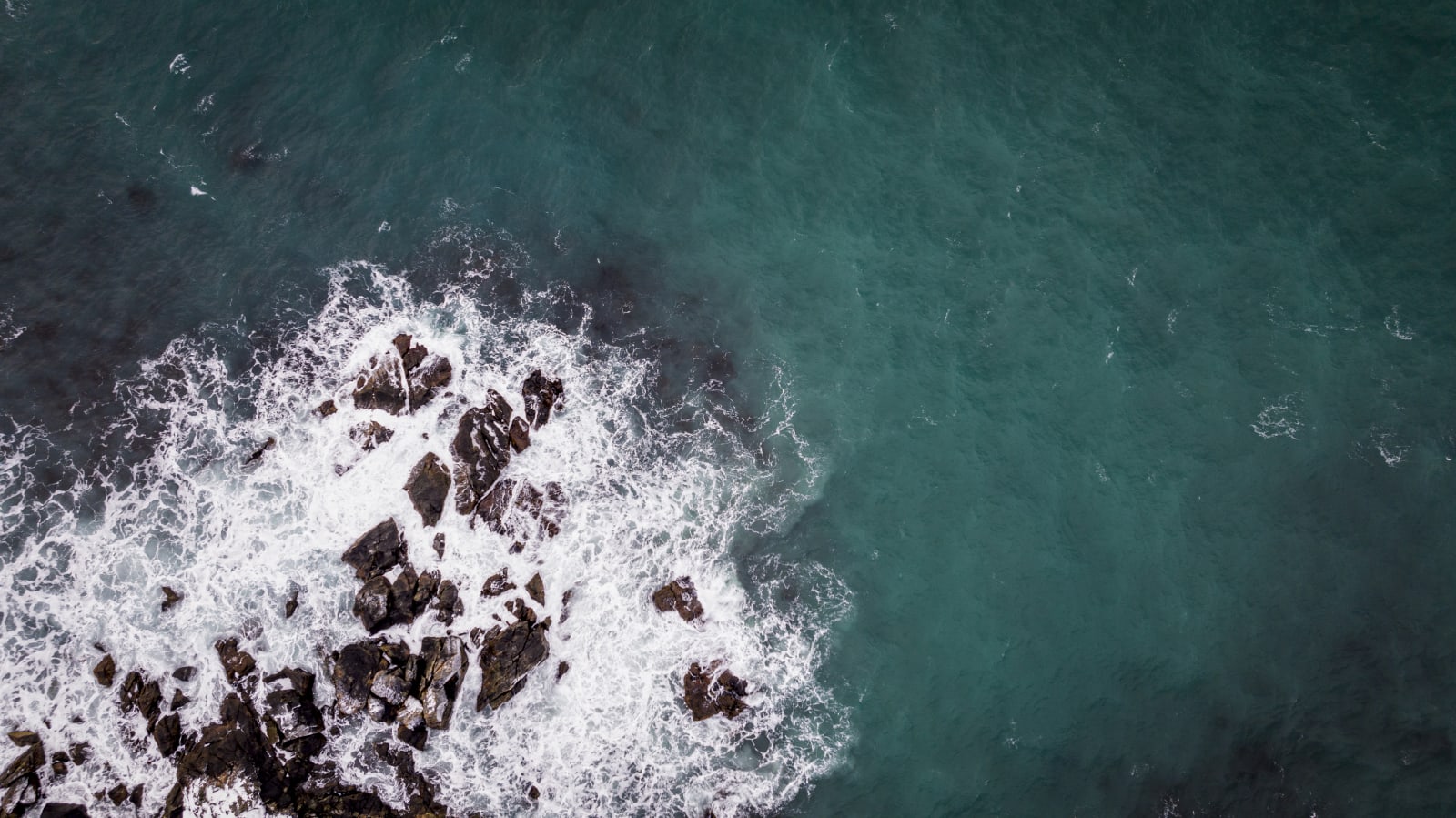
Over 20 years of development has led to industry-leading biological results
5 April 2024
Last summer, Andfjord Salmon delivered its first salmon to the market. The results were excellent, with an industry-leading survival rate of 97.5 percent and high quality. But these results were not created overnight. It's 20 years since the first surveys were conducted and this year marks 10 years since Andfjord Salmon AS was formally founded.
The first generation of Andfjord Salmon had a survival rate of 97.5%.
Low energy consumption of 1 kWh per kilo salmon, since the facility does not need to heat or pump water on shore
Very good fish health and strong growth, thanks in part to the temperature advantages provided by the Gulf Stream
More than 20% lower feed consumption per kilo of fish, compared to sea-based farming
Organic waste is collected and reused as a resource
These were the five most important results documented through the first harvest. Decades of work and long-term planning lie behind these results, of which we are proud.
"It's no coincidence that we have managed to achieve these results. Our founder came up with a concept that combines our natural conditions with the advantages of being on land. Since then, many knowledgeable people have been involved in realizing this unique opportunity, which involves merging the very best benefits of both sea and land-based farming. It is this 20-year effort that has created such excellent results," says Martin Rasmussen, CEO of Andfjord Salmon AS.
Favourable conditions on Andøya
It all started with some site surveys carried out by Akvaplan Niva over 20 years ago, when it was initially thought that the equipment was simply faulty. The surveyors saw that the temperature was many degrees warmer than they had expected. However, this was not down to faulty equipment, but rather that parts of the Gulf Stream pass the northern tip of Andøya and continue south along the Andfjord and past Kvalnes, where Andfjord Salmon's first land-based fish farm is located.
This unexpectedly high temperature was the start of what would later become Andfjord Salmon, which was formally founded on January 28, 2014, and is thus marking its tenth anniversary this year.
Before the first salmon could be delivered to the international market last summer, thousands of hours had been spent in planning, preparation, and execution.
"It started when our founder Roy Pettersen first came up with the idea for how a land-based facility could produce salmon without costly energy consumption. At the same time, he was familiar with this favourable area on Andøya, where the design could function optimally in the unique temperatures provided by the Gulf Stream," explains Rasmussen.
Gradually, the cutting-edge solution saw the light of day: a flow-through system, based on square pools with a laminar water flow. The pools recreate the salmon's natural habitat in the sea, where the water is changed continuously, around the clock. The location naturally benefits from access to Arctic water, where salmon have been swimming for thousands of years.
"Everything is naturally in place for land-based production here on Andøya. The Andfjord has the optimum temperature for salmon. We don't need to cool or heat the water," explains Rasmussen, who has a Master in fisheries and aquaculture and has worked with fish his entire life.
He adds: "Sustainability is the sum of all the factors of our concept. We use very little energy to produce salmon with good health and strong growth. The utilisation of the feed is very good, and at the other end we collect and recycle the biomass so that we are able to achieve a good coexistence with local ecosystems," explains Rasmussen.
Impossible without contributors
This would not have been possible without the initiators and key contributors, both locally and internationally. "Both local forces and important supporters from all over the world have been crucial to the concept seeing the light of day and creating these results. We have brought together technical, fish, and aquaculture expertise that, together with financial forces, have made this possible," says Rasmussen.
Andfjord Salmon is now well underway with the development of the next phase, which is progressing according to plan. In its current construction phase, Andfjord Salmon will build four new pools, which will increase the company's production capacity to 8,000 tonnes of HOG from 2025. The company aims to reach a production capacity of 40,000 tonnes at Kvalnes through a gradual increase in volume from 2025 to 2030.
In the first construction phase, Andfjord Salmon is also developing infrastructure in the area, such as waterways and port areas, which will support a future production capacity of 40,000 tonnes HOG at Kvalnes.

Andfjord Salmon celebrates 10 years: it all started with a bike ride
Founder Roy Pettersen was out cycling with his wife when he observed something at the water's edge he had never seen before. This was to mark the start of what has since become Andfjord Salmon AS.
"While my wife Berit was enjoying the view of the lake and the large flock of geese gliding by, I sat watching a machine contractor. A new marina was being dug out and prepared on dry land, before the seawater would then to be let in. It was simple and ingenious," says Roy Pettersen, board member and founder of Andfjord Salmon AS.
He had long been thinking of how to create the future of fish farming. And Pettersen believed this was the solution. The first drawings of a fish farming pool on land at Kvalnes on Andøya were sketched soon after returning from that bike ride.
Remarkable results
"The idea behind the technical concept was to establish farming units on land that would provide salmon with plenty of space, controlled seawater quality, and favourable temperatures throughout the year, without challenges relating to salmon lice and toxic algae, and completely escape-proof. Biological waste could be retrieved by robots and filtered to become bioenergy," explains Pettersen.
And that's exactly how Andfjord Salmon produces its salmon today.
In July 2023, Andfjord Salmon delivered its very first salmon to the international market. What started with a random bike ride on Sortland in Vesterålen, achieved remarkable results. The survival rate was 97.5 percent, which is industry leading. The water is guided into the pools without the use of expensive pumping, and less than 1 kWh of energy is used to produce 1 kilo of salmon.
Square pools were the answer
"Early on, I that the fish farming units should be large, deep and square, and that all of the water would be replaced with new seawater continuously. The idea that the pools should be square — something many did not believe — was due to the space the fish needed, but also to ensure that production would consume as little land area and energy as possible per volume of salmon produced," says Pettersen, 16 years after the bike ride.
But the marina that was dug out on dry land, before then being naturally filled up with seawater, also solved a completely different challenge.
"Pools with large volumes of water below sea level were primarily designed from energy conservation considerations, since large volumes of seawater were to be set in motion," the founder explains.

Natural Flow and laminar flow
Andfjord Salmon's concept has been named Natural Flow. Its pools are not filled using energy-intensive pumps, which is the case at many other land-based facilities. The water flows through the pools at a rate that replaces all the seawater 15-20 times a day, with little help from propellers. This is why the solution consumes very little energy. Andfjord Salmon's own patented solution creates a laminar flow, whereby the water flows at the same speed in all of its layers, which ensures very good conditions for the salmon, which are not that different from its natural conditions in the adjacent sea.
But the Andfjord Salmon fairy tale started long before the bike ride in 2008.
"Already as a newly graduated Master of fisheries and aquaculture, I dreamed of returning to my home municipality of Andøy to start salmon farming. I applied for a licence here in 1979, but unfortunately, or perhaps fortunately, I did not meet the highly stringent requirements. Only 15 out of 150 applicants in Nordland County were granted a permit in 1981, and I ended up in 17th place. I remember being very disappointed by the rejection, but it happened for a reason," says Pettersen.
The Andfjord is perfect for aquaculture
Experiencing the salmon dream with sea-based facilities seemed unattainable to him. But then something happened that sped up Pettersen's plans.
"In 2001, something important happened that made me really aware of how good the conditions were for land-based food fish production on the northeast side of Andøya. The municipality carried out an extensive survey of the Andfjord. Akvaplan Niva was then able to document that fresh temperate Gulf Stream water flowed close to shore, which created ideal conditions for the farming of marine fish and salmon. The initiative came after I had previously contacted Andøy's business manager, Bjørnar Sellevold, to check out the possibilities for marine farming in Andøy," says Pettersen.
He never managed to forget about the farming opportunities he had stumbled across on the stretch from Fiskenes to Kvalnes. His belief was so strong that the perfect properties at Kvalnes were secured as early as in 2013.
"It was crucial that local landowners at Kvalnes were so positive," says Pettersen.

Crucial supporters at every level
But he didn't do the job all by himself.
A former Andøya resident also played a key role. Per Otto Heggelund had moved to Seattle in the USA to establish land-based farming of Pacific salmon.
"I spent many late night hours sparring with Per Otto, who later became one of my first partners in the company," says Pettersen.
Then the ball started to roll. Fabrikken Næringshage (now called Egga Utvikling AS) launched up an innovation arena and, not least, a network of contacts that would quickly yield results.
"On 28 February 2014, Andfjord Salmon was formally founded, with Odd Roger Enoksen, Frode Nilsen and myself on the board. The initiative was well received by the funding agencies, and Andøy Municipality's Business Fund, Samskap, Innovation Norway, Nordland County Council, SIVA, and the Research Council of Norway all contributed during the first phase. At the same time, two major contributors joined the project: Ben Tommy Eriksen and Helge Krøgenes. Both were crucial for us to be able to document our technological solution and secure funding for the first phases," says Pettersen.
Major scepticism in the beginning
After an extensive application process, the zoning plan and impact assessment were approved, and the company was granted permission for 10,000 MAB in October 2018.
Following several rounds of raising capital and securing additional funding from Innovation Norway, the company was listed on Euronext Growth Oslo on 23 June 2020.
"This process has been an important step in building a growth strategy for the company and ensuring we have highly skilled people at every level," says Pettersen.
Today, 10 years have passed. The technology is proven. The concept works exactly as intended. And Andfjord Salmon is working on the next chapter in its history — the development of 12 new pools at Kvalnes.
"Although there were many who neither understood nor believed that my plans would be realised, I became increasingly confident in the idea. This scepticism and lack of understanding became in itself an important driving force, and I often thought 'yes, I will demonstrate that we can succeed in achieving this'," says Pettersen.
ABOUT ANDFJORD SALMON
Located at Andøya on the Arctic Archipelago of Vesterålen, Norway, Andfjord Salmon is developing the world’s most sustainable and fish-friendly aquaculture facility of its kind. Through a proprietary flow-through system, Andfjord Salmon combines the best from ocean and land-based salmon farming. In its first production cycle, the company achieved an industry-leading survival rate of 97.5 percent, feed conversion ratio of 1.05, superior share of 91.1 percent, and required 1 kWh to produce one kilo of salmon. Andfjord Salmon has identified a roadmap towards a production capacity of 40,000 tonnes HOG at Kvalnes, Andøya, and set a long-term ambition to reach 90,000 tonnes HOG across Kvalnes, Breivika and Fiskenes at Andøya.
Latest news

Investor
News
Notice of Extraordinary General Meeting

News
Investor
Succcessful smolt release

News
Investor
Successful feed tests at Kvalnes

News
Investor
Preparing for smolt release | Q2 and H1 2025 financial resul...

News
Investor
Invitation to Q2/H1 2025 results presentation

News
Investor
Inlet waterway successfully completed

Andfjord Salmon is a Norwegian company established in 2014. The company is listed on the Oslo Stock Exchange (ANDF), and based in Kvalnes on the northernmost island of Andøya in Vesterålen, Norway.
